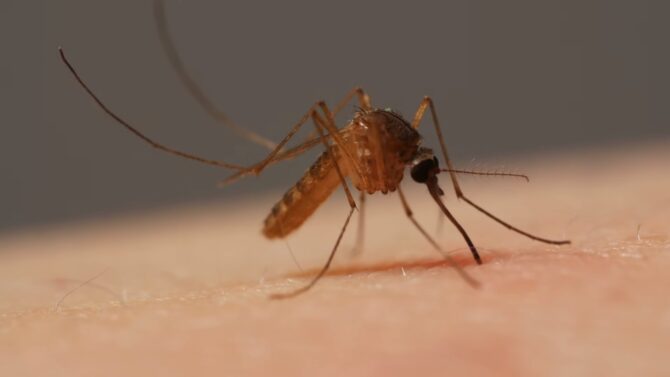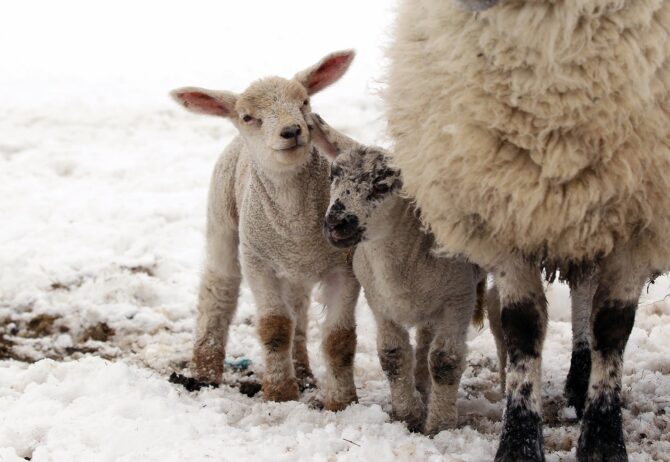Hey there, animal enthusiasts! 🐾 Ever wondered why some creatures live for centuries while others only grace our planet for mere hours?
It’s a fascinating dance of nature, influenced by their surroundings, what they munch on, who’s out to get them, and how they go about the birds and the bees. Take the majestic bowhead whale, for instance, which can serenely swim in our oceans for over two centuries.
Contrast that with the fleeting mayfly, whose entire life can be shorter than our lunch break! In today’s post, we’re diving deep into the world of 17 critters who have the shortest stints on Earth.
From the tiniest bugs to some surprisingly big mammals, these animals hail from every corner of our diverse planet.
Shall we begin this adventure and reveal the secrets surrounding their brief existence?
17. Starfish
Starfish, also known as sea stars, are captivating marine invertebrates that belong to the class Asteroidea. Contrary to their name, they aren’t fish but echinoderms, closely related to sea urchins and sand dollars.
Most starfish have a central disc and five arms, though some species can have more. Their underside is dotted with tiny tube feet, which they use for movement and catching prey.
Starfish have a unique ability to regenerate lost arms, and in some cases, an entire starfish can grow from a single severed arm. While many starfish species have lifespans of a few years, certain species, like the red sea star, can live for over 30 years in the right conditions.
16. Jellyfish
Jellyfish are ethereal creatures that have roamed our oceans for over 500 million years, making them one of the oldest living creatures on Earth. They are made up of a gelatinous umbrella-shaped bell and trailing tentacles.
These tentacles can be armed with stinging cells called cnidocytes, which they use to capture prey and defend against predators. Jellyfish come in various sizes, from the tiny Irukandji to the giant lion’s mane jellyfish.
Their lifespans vary significantly based on the species. While some may live only a few days or weeks, others, like the Turritopsis dohrnii or “immortal jellyfish,” can revert to their juvenile form after reaching maturity and theoretically live indefinitely.
15. Ruby-throated hummingbird
The ruby-throated hummingbird is a dazzling bird native to North America, easily recognizable by its iridescent green upper body and, in males, a bright red throat. These birds are incredible flyers, with wings that can beat up to 80 times per second, allowing them to hover in place.
They feed primarily on nectar from flowers, using their long, specialized bills and extendable, tube-like tongues. While they play a crucial role in pollination, they also consume insects and spiders for protein.
On average, a ruby-throated hummingbird’s lifespan is about three years, but many don’t survive their first year due to factors like predation or harsh weather.
14. Tadpole
Tadpoles are the intriguing larval stage of amphibians, primarily frogs and toads. They start life as eggs laid in water and, once hatched, resemble tiny fish with their round bodies and long, finned tails.
As they grow, tadpoles undergo a remarkable transformation called metamorphosis, where they develop legs, lose their tails, and become juvenile frogs or toads adapted to live on land. The duration of the tadpole stage can vary widely among species.
While some might transform within weeks, others, like the spadefoot toad tadpoles, can remain in their aquatic stage for several years, especially in arid environments where they await sufficient rain to complete their transformation.
13. Common mouse

The common mouse, often referred to as the house mouse, is a small mammal that has coexisted with humans for millennia. With their gray-brown fur, rounded ears, and long tails, they are well-adapted to a variety of environments, from fields to urban areas.
Mice are omnivores, feeding on seeds, plants, and insects, but in human habitats, they often consume food scraps. They play a vital role in the ecosystem as prey for larger animals like birds, snakes, and mammals.
While they reproduce rapidly, with females capable of giving birth to several litters a year, the average lifespan of a common mouse in the wild is about one year due to predation and environmental factors.
12. Shrimp
Shrimp are small to medium-sized crustaceans that inhabit freshwater and marine environments worldwide. They have a slender, transparent body, long antennae, and often a curved abdomen.
Shrimp are vital in the food chain, serving as both predators of smaller organisms and prey for larger animals. They play a significant role in maintaining water quality by feeding on detritus.
While there are numerous species of shrimp, many have a life cycle that includes a larval stage, followed by a juvenile stage, and finally the adult stage. Most adult shrimps live for about a year, but this can vary depending on the species and environmental conditions.
11. Sea squirt
Sea squirts, or tunicates, are marine invertebrates that belong to the subphylum Tunicata. They are named for their soft, sac-like bodies encased in a protective outer covering called a tunic.
Most sea squirts are sessile as adults, attaching themselves to substrates like rocks, boat hulls, or underwater equipment. They filter-feed by drawing water into their bodies and extracting plankton and organic particles.
While they might appear simple, sea squirts are of particular interest to scientists because they share a common ancestor with vertebrates. The typical adult sea squirt has a lifespan of about one year, though this can vary among species.
10. Muller’s giant Sunda rat
Muller’s giant Sunda rat is a unique rodent species native to parts of Southeast Asia. As the name suggests, it’s one of the larger rat species, with a robust body and short tail.
These rats are nocturnal and primarily herbivorous, feeding on a variety of plant materials. Their habitats include forests, plantations, and cultivated areas.
Despite their size, Muller’s giant Sunda rats have a notably short lifespan. The adults typically live for about six months, making them the shortest-lived mammal known.
9. Cicada
Cicadas are large insects recognized for their distinctive, often deafening songs. They have a unique life cycle, with some species spending many years underground as nymphs, feeding on the sap from tree roots.
Once they emerge, they molt into their adult form, which is when they produce their characteristic sound, primarily by males to attract females. While the adult stage is brief, lasting only about four to six weeks, some cicada species can spend up to 17 years underground before emerging!
8. Mosquito

Mosquitoes are small, flying insects known for their biting habits. Female mosquitoes feed on blood, which provides the necessary proteins for egg production.
In contrast, males primarily feed on nectar. Mosquitoes are vectors for several diseases, including malaria, dengue, and Zika virus. Their life cycle includes four stages: egg, larva, pupa, and adult.
While the aquatic stages (larva and pupa) can last several days to weeks, the adult mosquito’s lifespan ranges from two to four weeks, depending on the species and environmental conditions.
7. Butterfly
Butterflies are among the most beautiful and iconic insects, celebrated for their vibrant wings and graceful flight. They undergo a complete metamorphosis, transitioning from egg to caterpillar (larva), then to chrysalis (pupa), and finally emerging as an adult butterfly.
While the larval stage is primarily focused on feeding and growth, the adult stage is dedicated to reproduction. Depending on the species, environmental conditions, and time of year they emerge, adult butterflies typically live for about one to two weeks.
However, some species, like the monarch butterfly, can live for several months, especially if they are part of a migratory generation.
6. Sign Eviota
The Sign Eviota, or Eviota sigillata, is a tiny species of goby fish found in the coral reefs of the Great Barrier Reef. Despite its small size, it boasts vibrant colors, making it a favorite among aquarists and divers.
These fish are part of the diverse marine ecosystem, feeding on microscopic plankton and serving as prey for larger predators. Their short adult lifespan of about two weeks is a testament to the fast-paced life in the reef, where rapid reproduction is essential for species survival amidst numerous threats.
5. Housefly
The housefly, scientifically known as Musca domestica, is a ubiquitous insect that has adapted to live alongside humans. With large compound eyes and a pair of wings, they are agile fliers, often found buzzing around homes, farms, and other human settlements.
Houseflies are scavengers, feeding on a wide range of organic materials, from food scraps to animal waste. Their short lifespan of about two weeks is counterbalanced by their rapid reproductive rate, with females laying hundreds of eggs in their lifetime.
4. Firefly
Fireflies, or lightning bugs, are enchanting insects known for their ability to produce light through a chemical reaction in their abdomens. This bioluminescence is used in mating rituals, where specific light patterns attract potential partners.
There are over 2,000 species of fireflies, each with its unique light display. While their adult stage lasts about a week, it’s a time of intense activity, focused on reproduction.
The larvae, often called “glow worms,” can live for several months to years, depending on the species, before metamorphosing into adults.
3. Fruit fly
The fruit fly, particularly the species Drosophila melanogaster, is a tiny insect that has made significant contributions to genetic research due to its short life cycle and simple genome. In the wild, fruit flies are attracted to overripe and fermenting fruits and vegetables, where they lay their eggs.
The larvae feed on the decaying matter, providing a valuable role in breaking down organic materials. Despite their name suggesting a lifespan of a few days, adult fruit flies can live up to 40 days, during which they reproduce prolifically.
2. Drone ant
In the complex social structure of ant colonies, the drone ant, or male ant, has a singular purpose: to mate with the queen. Drones are winged and lack the worker ants’ stingers and mandibles.
After emerging from their pupal stage, they take flight in a nuptial swarm, where they mate with a queen in the air. Post-mating, their short lifespan of about three days comes to an end, as their primary role in the colony’s life cycle is complete.
1. Mayfly
Mayflies are aquatic insects known for their ephemeral adult stage. After spending most of their life as nymphs in freshwater habitats, they emerge en masse in synchronized hatches, filling the air in a dance of wings.
This adult stage, which can last just a few hours to a couple of days depending on the species, is dedicated solely to reproduction. They don’t even have functional mouthparts to eat.
After mating, females lay their eggs in water, and the cycle begins anew. The nymph stage, which can last up to two years, is a stark contrast to the fleeting adult phase, showcasing nature’s diverse strategies for survival.
Table
| Animal | Lifespan (Adult) |
|---|---|
| Mayfly | Few hours |
| Drone ant | 3 days |
| Housefly | 2 weeks |
| Sign Eviota | 2 weeks |
| Fruit fly | 40 days |
| Ruby-throated hummingbird | 3 years |
| Common mouse | 1 year |
| Muller’s giant Sunda rat | 6 months |
| Firefly | 1 week |
| Shrimp | 1 year |
| Butterfly | 1-2 weeks |
| Cicada | 4-6 weeks |
| Mosquito | 2-4 weeks |
| Tadpole | Several months to years |
| Sea squirt | 1 year |
| Jellyfish | Several years |
| Starfish | Several months to 30 years |
FAQ
Why do some animals have such short lifespans?
There are many reasons why an animal might have a short lifespan. Some animals, such as the mayfly, live in environments where they are heavily preyed upon.
Others, such as the fruit fly, have a rapid reproductive strategy that allows them to produce a large number of offspring in a short amount of time.
What are the advantages of having a short lifespan?
There are several advantages to having a short lifespan. For animals that live in environments where they are heavily preyed upon, a short lifespan can help them avoid being eaten.
Animals with a rapid reproductive strategy can also benefit from a short lifespan, as they can produce a large number of offspring in a short amount of time.
What are the disadvantages of having a short lifespan?
There are also some disadvantages to having a short lifespan. Animals with short lifespans may not have enough time to learn and grow.
They may also not have enough time to reproduce and pass on their genes.
Final Words
The animals on this list represent a wide variety of species, but they all have one thing in common: they have very short lifespans. The reasons for this vary from species to species, but it is often due to their






